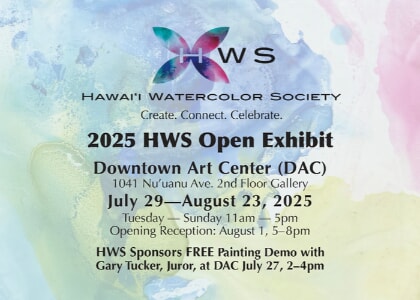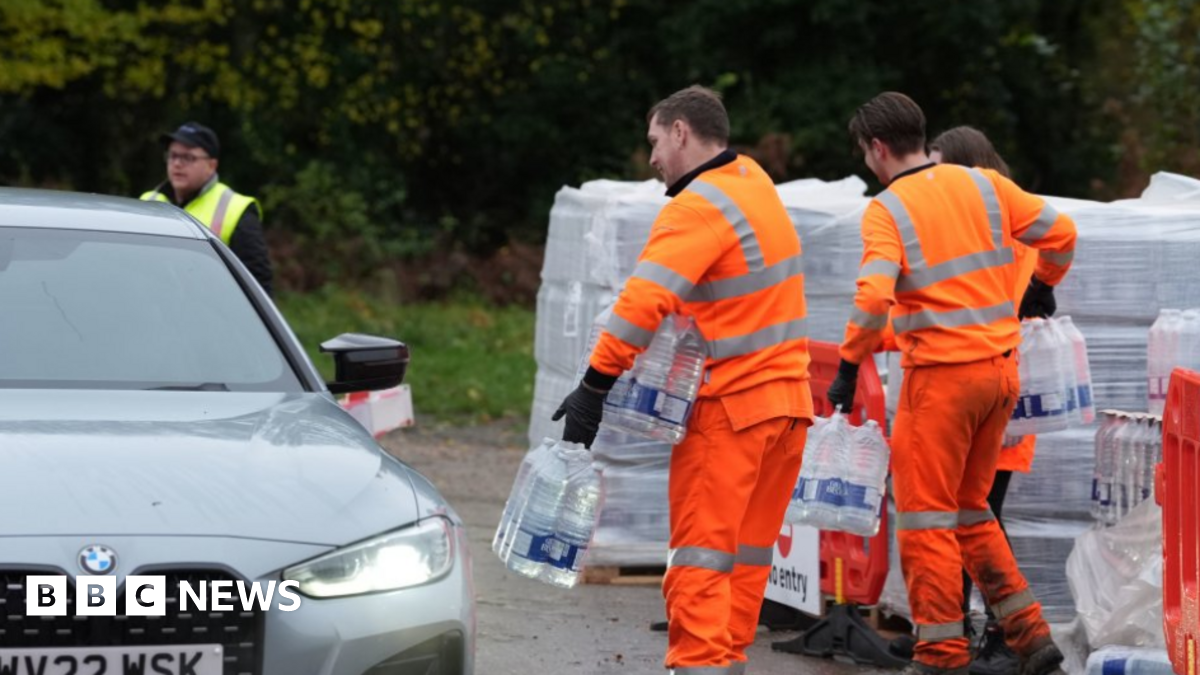Hawaii researchers look for fresh water beneath seafloor off Big Island – Honolulu Star-Advertiser

Report on Offshore Freshwater Aquifer Investigation in Hawaii and its Alignment with Sustainable Development Goals
1.0 Executive Summary
A scientific expedition was recently conducted off the coast of Hawaii island to investigate the existence of a significant subterranean freshwater reservoir. This research, a collaboration between the University of Hawaii, Scripps Institution of Oceanography, and the Natural Energy Laboratory of Hawaii Authority, directly addresses several United Nations Sustainable Development Goals (SDGs), primarily SDG 6 (Clean Water and Sanitation) by exploring new potential water sources and improving hydrological understanding. The project also exemplifies SDG 9 (Industry, Innovation, and Infrastructure) through its use of advanced imaging technology and contributes to SDG 11 (Sustainable Cities and Communities) by seeking to secure water resources for island populations. The collaborative nature of the study highlights SDG 17 (Partnerships for the Goals).
2.0 Project Objectives and Contribution to SDG 6
The primary goal of the survey is to verify a theory that challenges conventional hydrological models for volcanic islands. This research is critical for the sustainable management of water resources, a core target of SDG 6. The key objectives are:
- To confirm the presence and extent of a deep, confined freshwater or brackish aquifer beneath the seafloor.
- To resolve long-standing discrepancies in Hawaii Island’s water cycle models, where observed coastal discharge does not align with estimated groundwater recharge.
- To develop new conceptual models for freshwater systems on volcanic islands, improving resource management policies.
3.0 Methodology: Innovation for Sustainable Development (SDG 9)
The expedition utilized innovative technologies, underscoring a commitment to SDG 9 (Industry, Innovation, and Infrastructure). The advanced methods were necessary to image the complex volcanic geology to depths far exceeding typical surveys.
- Technology: Advanced electromagnetic imaging was employed to survey two coastal areas of West Hawaii.
- Deployment: Instruments were deployed on the seafloor to detect electromagnetic echoes, providing data on subterranean structures.
- Data Acquisition: A 150-foot-long towed sensor emitted a low-power signal, which was recorded by a 3,300-foot-long receiver array.
- Imaging Depth: The survey aimed to resolve features up to 10,000 feet below the seafloor, a significant increase from the standard 1,000 feet, to adequately map the complex aquifers.
4.0 Findings and Implications for Sustainable Communities (SDG 11 & SDG 14)
Preliminary analysis suggests that the extent of these offshore aquifers may be greater in both breadth and depth than previously theorized. The confirmation of such a reservoir has profound implications for building resilient and sustainable communities, a key aspect of SDG 11.
- Resource Re-evaluation: The existence of these aquifers necessitates a re-evaluation of how freshwater resources are understood and managed across the islands.
- Potential for Desalination: Researchers note the water is likely brackish and would require desalination, linking the discovery to future sustainable infrastructure needs.
- Marine Ecosystem Considerations (SDG 14): Understanding the interaction between these deep aquifers and the coastal marine environment is crucial. Future policies must consider the potential impacts of accessing these resources on life below water.
5.0 Conclusion and Future Outlook
The data collected is now being processed to create a detailed model of the offshore geology. This model will be foundational for informing future water management policies in Hawaii and other volcanic regions globally. The research provides a critical framework for understanding freshwater resources, enhancing climate adaptation strategies (SDG 13: Climate Action), and ensuring the long-term availability of clean water (SDG 6). The findings from the Kona coast, along with similar studies off Oahu, will advance the global understanding of hydrogeology in volcanic environments, contributing valuable knowledge to the international scientific community.
1. Which SDGs are addressed or connected to the issues highlighted in the article?
-
SDG 6: Clean Water and Sanitation
This is the most central SDG addressed in the article. The entire text focuses on a scientific expedition to locate and understand a “vast underground reservoir of fresh or brackackish water.” The research aims to improve the understanding of Hawaii’s water cycle and inform the management of freshwater resources, which is fundamental to ensuring the availability and sustainable management of water.
-
SDG 9: Industry, Innovation, and Infrastructure
The article highlights the critical role of scientific research and technological innovation. The expedition “utilized advanced electromagnetic imaging technology” and complex data modeling to explore the subterranean aquifer. This effort, led by researchers from the University of Hawaii and Scripps Institution of Oceanography, directly relates to enhancing scientific research and upgrading technological capabilities to solve resource challenges.
-
SDG 17: Partnerships for the Goals
The project described is a collaborative effort. The article states that the survey involved “researchers from the University of Hawaii at Manoa and Scripps Institution of Oceanography, working under contract with the Natural Energy Laboratory of Hawaii Authority and funded by the state Legislature.” This multi-stakeholder partnership between academia and government is essential for mobilizing knowledge and resources to achieve sustainable development goals.
2. What specific targets under those SDGs can be identified based on the article’s content?
SDG 6: Clean Water and Sanitation
-
Target 6.5: By 2030, implement integrated water resources management at all levels.
The research is a foundational step towards this target. The article states that once the existence and extent of the aquifers are known, “we will be able to make informed policies about the management of these resources.” Furthermore, the need to “reevaluate those conceptual models, and update them to reflect the reality” is a core component of developing an integrated and accurate approach to water management.
-
Target 6.4: By 2030, substantially increase water-use efficiency across all sectors and ensure sustainable withdrawals and supply of freshwater to address water scarcity.
While the article focuses on discovery rather than use, the research directly supports this target. By “processing the collected data to confirm the reservoir’s existence and to estimate the volume of water stored offshore,” the researchers are providing the necessary information to plan for potential sustainable withdrawals and better manage the overall supply of freshwater.
SDG 9: Industry, Innovation, and Infrastructure
-
Target 9.5: Enhance scientific research, upgrade the technological capabilities of industrial sectors in all countries… encouraging innovation.
The article is a case study for this target. The expedition is an act of enhanced scientific research that uses “advanced electromagnetic imaging technology” and requires imaging “up to 10 times” deeper than typical surveys. This demonstrates a significant upgrade in technological capability applied to understanding complex hydrologic systems in volcanic environments.
SDG 17: Partnerships for the Goals
-
Target 17.6: Enhance… cooperation on and access to science, technology and innovation and enhance knowledge-sharing.
The project itself is a partnership between two major research institutions (University of Hawaii and Scripps) and a state authority (NELHA). The article also explicitly mentions that the survey will “provide a foundation for understanding freshwater resources on volcanic islands both here and abroad,” indicating an intent for broader knowledge-sharing beyond the immediate project scope.
3. Are there any indicators mentioned or implied in the article that can be used to measure progress towards the identified targets?
SDG 6: Clean Water and Sanitation
-
Implied Indicator for Target 6.5: Degree of integrated water resources management (IWRM) (Indicator 6.5.1).
The article does not provide a quantitative score but implies progress. The entire research initiative, aimed at creating a new “model of the earth offshore Kona” to “reevaluate… conceptual models” of hydrology, is a qualitative indicator of the implementation of IWRM. It represents the data gathering and scientific understanding phase necessary for effective management.
SDG 9: Industry, Innovation, and Infrastructure
-
Implied Indicator for Target 9.5: Research and development expenditure (Indicator 9.5.1).
The article implies this indicator by stating the project was “funded by the state Legislature.” This shows a direct public financial investment in scientific research and development, although the specific monetary value is not mentioned.
SDG 17: Partnerships for the Goals
-
Implied Indicator for Target 17.6: Science and/or technology cooperation agreements and programmes (part of Indicator 17.6.2).
The collaboration described in the article—involving the University of Hawaii, Scripps Institution of Oceanography, and the Natural Energy Laboratory of Hawaii Authority—serves as a concrete example of a science and technology cooperation program between multiple stakeholders, thus acting as a qualitative indicator for this target.
4. Table of SDGs, Targets, and Indicators
| SDGs | Targets | Indicators |
|---|---|---|
| SDG 6: Clean Water and Sanitation |
|
|
| SDG 9: Industry, Innovation, and Infrastructure |
|
|
| SDG 17: Partnerships for the Goals |
|
|
Source: staradvertiser.com

What is Your Reaction?
 Like
0
Like
0
 Dislike
0
Dislike
0
 Love
0
Love
0
 Funny
0
Funny
0
 Angry
0
Angry
0
 Sad
0
Sad
0
 Wow
0
Wow
0

















































:focal(1500,1000)/https://media.globalcitizen.org/a6/9a/a69a4720-d8a1-4715-b596-18738d03c05c/rotary_polio_hero_image.jpg?#)






/countries/sri-lanka/photo-credit---dmc-sri-lanka.tmb-1200v.jpg?sfvrsn=dc298bcc_1#)









.jpg?#)







